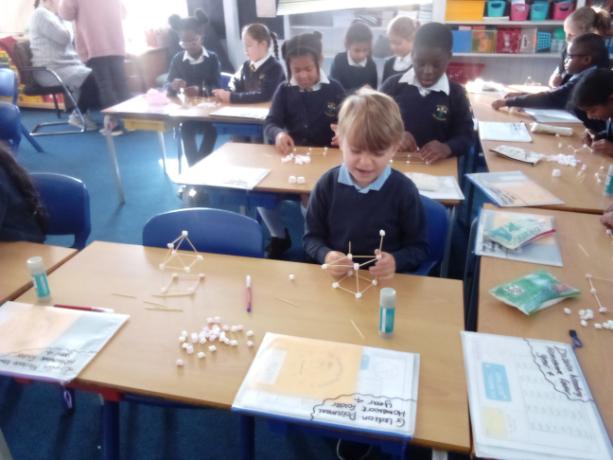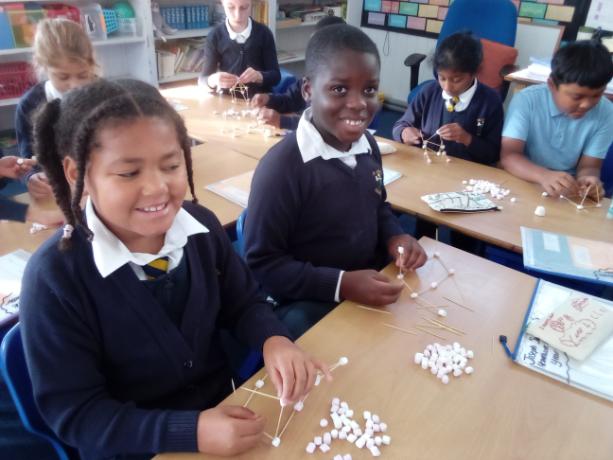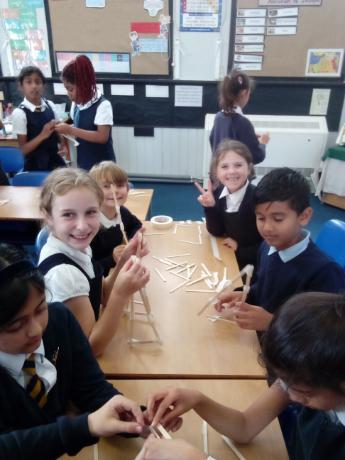Design and Technology
Intent
At St Anne’s, our intent for the Design and Technology (D&T) curriculum is to empower our pupils to become innovative, resilient, and reflective thinkers, equipped with the necessary skills to tackle real-world problems. We aim to foster a deep understanding of the design process, enabling students to conceptualise, create, and evaluate their work, whilst nurturing a passion for creativity and practical application.
In alignment with our Catholic ethos, we promote moral responsibility through sustainable practices and the ethical consideration of our designs. Our curriculum is designed to encourage collaboration, communication, and empathy, mirroring the Gospel values of love, respect, and stewardship. We ensure that all pupils, regardless of their background or abilities, have equal access to a high-quality learning experience in D&T.
Implementation
The D&T curriculum at St Anne’s is carefully structured to provide a progressive, spiral learning journey from Reception to Year 6. We adhere to the National Curriculum expectations and incorporate the Catholic values that define our school culture. Our implementation strategy includes:
1. Curriculum Design: The D&T curriculum is designed around key areas: designing, making, evaluating, and technical knowledge. Each unit is linked to a cross-curricular context, often integrating themes from science, geography, maths and religious education to show the practical applications of D&T learning.
2. Hands-On Learning: We provide ample opportunity for pupils to engage in hands-on projects, where they can apply theoretical knowledge in practical scenarios. This includes the use of tools, materials, and digital technologies, enhancing their technical skills and creativity.
3. Inclusive Practices: Lessons are tailored to meet the diverse needs of our pupils through adaptive teaching, ensuring every child can contribute and succeed. We implement scaffolded support for those who require it, while also providing extension activities for more advanced learners.
4. Assessment and Feedback: Continuous formative assessments are embedded within our lessons, allowing teachers to provide timely and constructive feedback. Each pupil is encouraged to reflect on their work, promoting a growth mindset and an understanding of how to improve.
5. Community Engagement: We actively seek links with local industries and community partners to enrich the curriculum, providing pupils with real-world insights into D&T. Guest speakers, trips, and workshops serve to inspire and contextualise their learning experiences.
6. Professional Development: Our staff undergo regular training and development in D&T pedagogy and the latest trends in design and technology, ensuring high-quality delivery and adherence to best practices.
Impact
The impact of our D&T curriculum can be seen in the increased engagement and enthusiasm for learning within our pupils. We evaluate the effectiveness of our curriculum through various indicators:
1. Pupil Outcomes: By the end of their primary education, all pupils demonstrate proficiency in designing, making, and evaluating their projects. Pupils meet age-related expectations, showcasing creativity, problem-solving skills, and the ability to work collaboratively.
2. Behaviour and Attitude: Pupils display confidence and pride in their D&T work, often participating in exhibitions and school events to showcase their learning. The values of resilience and perseverance are evident as they tackle challenges and learn from failures.
3. Parental Engagement: Feedback from parents indicates a strong appreciation for the D&T curriculum, often highlighting improvements in their children’s confidence and attitude towards learning across various subjects.
4. Community Recognition: Collaborative projects with local partners not only enhance learning but also foster connections with the community, revealing our commitment to equipping pupils with skills relevant to the modern world.
5. Spiritual and Moral Development: Our D&T programme promotes ethical considerations in design, enabling pupils to understand the importance of sustainability and responsibility towards creation, in line with our Catholic teachings.
Resources
Useful Websites
- https://www.stem.org.uk/home-learning/secondary-design-technology
- https://www.bbc.co.uk/bitesize/subjects/zb9d7ty
- https://www.bbc.co.uk/bitesize/subjects/zyr9wmn
- https://www.topmarks.co.uk/Search.aspx?Subject=7
- https://projects.mouse.org
- https://www.smallpeicetrust.org.uk/engineering-at-home
- https://www.dyson.co.uk/newsroom/overview/update/top-five-engineering-challenges-to-do-at-home
- https://www.legofoundation.com/en/learn-how/knowledge-base/six-bricks-booklet/
- https://neonfutures.org.uk
- https://www.crackingideas.com/third_party/Cracking+Ideas/Activities#resource-filter
- https://techwecan.org/at-home/
- https://www.royalmint.com/globalassets/kids/activity-page/kids-hub_art-and-design.pdf
- https://www.kiwico.com/kids-at-home




